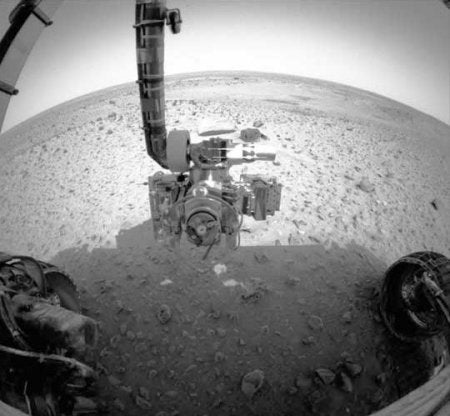To make sure the arm and its equipment will perform on the martian surface, engineers working with NASA put the arm through a rigorous battery of tests. Along with drilling into a large number of rocks and taking sample images and spectra, the rover was asked to strut its stuff in a chamber that simulated martian conditions. With temperatures well below freezing and the air pressure sucked down to almost a vacuum, this thermal vacuum chamber helps engineers confirm that the rover and its arm won’t breakdown in extreme conditions.
Scientists and engineers have also found ways to experiment with the rover’s arm without moving a single joint. Using three-dimensional renderings of target objects, rover operators can simulate reaching out and touching something without risking a bad-approach with a real rover. This will be particularly useful when trying to reach into small spaces or when maneuvering around outcroppings. In case someone does send an off-target command, the arm’s instruments are equipped with auto-shutoff contact switches similar to those found on many garage doors.
Through testing, simulation, and careful design, scientists and engineers have all but guaranteed that great discoveries will come from the Mars Exploration Rovers and their arm-bound instruments.










